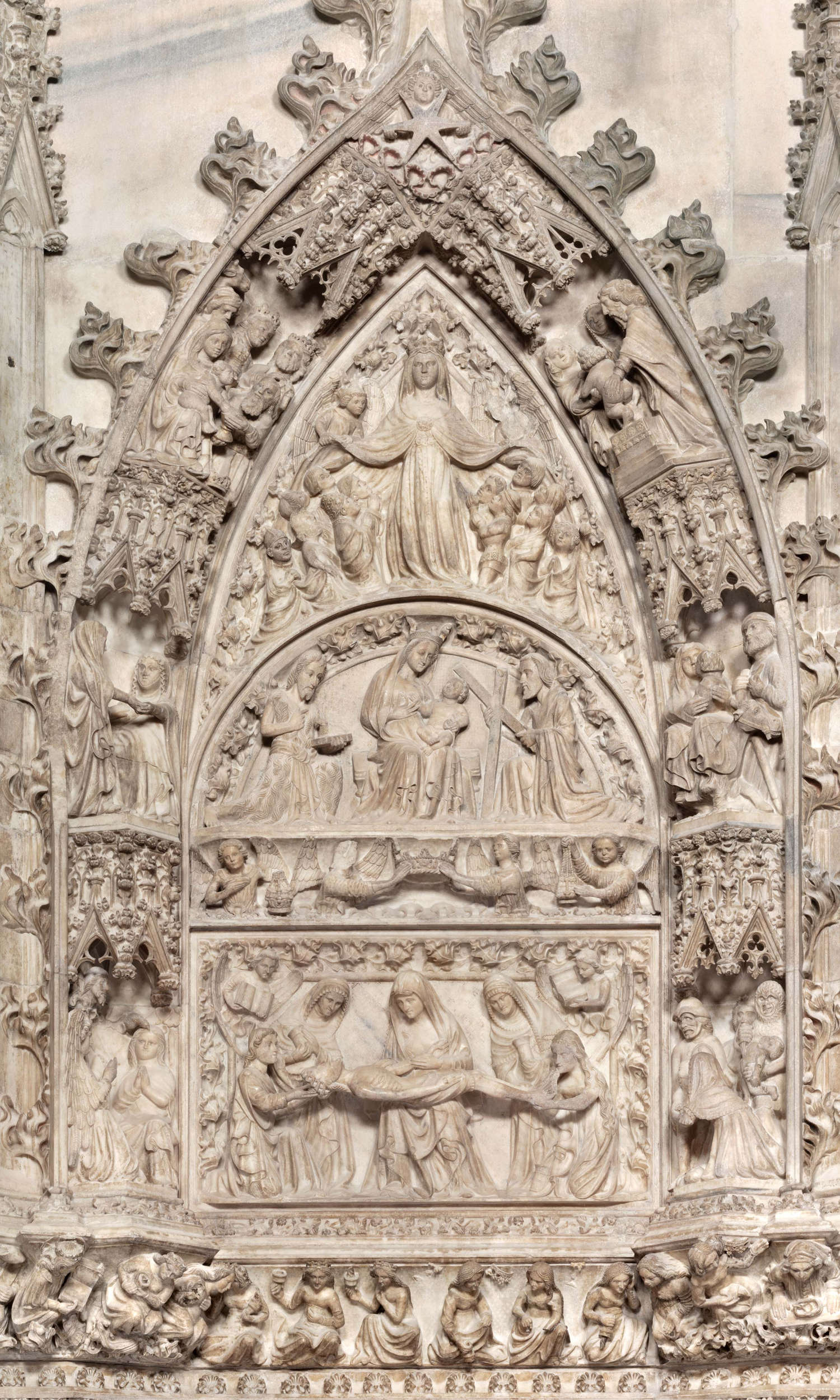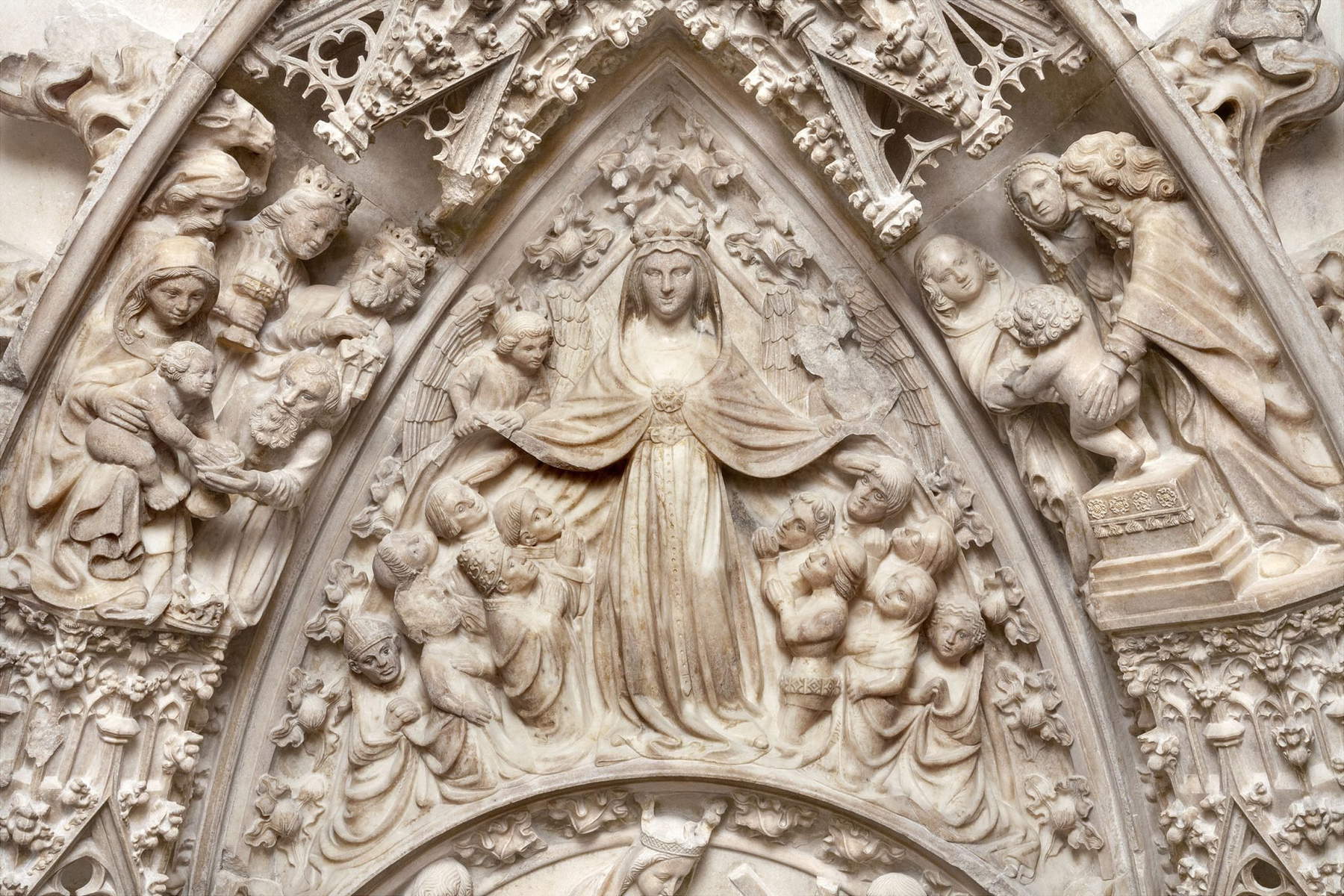The Veneranda Fabbrica del Duomo di Milano adds a new piece to the great project dedicated to the protection and enhancement of the Cathedral’s historical and artistic heritage, announcing the completion of the restoration of the Capitular Sacristy. This is one of the most symbolic and ancient rooms of the monumental complex, the heart of Ambrosian liturgical life and a place closely linked to the figure of the Archbishop and the Metropolitan Chapter. The intervention restores new light to a space that, over the centuries, had gradually lost legibility due to surface deposits, oxidation and material stratifications that had attenuated its original decorative richness.
The project is part of the continuity of the work completed in 2021 in the Aquilonare Sacristy and is part of an organic program dedicated to the conservation of the entire system of sacristies in the cathedral. For the Capitular Sacristy, one of the Cathedral’s founding places, the construction site represented an opportunity to recover and make perceptible again a heritage that combines sculpture, architecture, wooden furnishings and ornamental apparatus from different periods. The result is now legible thanks to the patient and coordinated work of restorers, technicians and scholars who worked under the supervision of the Soprintendenza Archeologica Belle Arti e Paesaggio for the metropolitan city of Milan. The restoration was also made possible thanks to the support of the Institution’s funders, including the Ministry of Infrastructure and Transport and the Lombardy Region.

Among the most notable elements is the recovery of the 14th-century portal leading into the Sacristy, attributed to the sculptor Hans von Fernach. The intervention has restored the legibility of the original polychromes and gilding, bringing to light the decorative intention that characterized the entrance to one of the most significant rooms of the Cathedral. The work, which had long been obscured by chromatic alterations and deposits, thus returns to express the complexity of its workmanship and its symbolic role as a threshold between the space of ritual and that of liturgical preparation.
Inside, restoration involved several elements of particular value. The basin sculpted by Giovannino de’ Grassi, an important testimony to Lombard late Gothic art, underwent a careful intervention that recovered its surfaces and ornamental finesse. The 19th-century decorations of the vaults also underwent a targeted intervention, aimed at restoring chromatic unity and coherence to the various decorative phases that had overlapped over the centuries. The imposing wooden cabinets intended for the custody of vestments and the Cathedral Treasury were restored to recover the complexity of the wooden essences, the calibration of the surfaces, and the function as ceremonial containers that they have held for centuries.
The overall intervention demonstrates the Veneranda Fabbrica’s desire to preserve and return to the community a space that represents not only a chapter in the history of the Cathedral, but a place where art, memory and liturgy are intertwined. The Capitular Sacristy, with its historical and artistic stratifications, is in fact an environment that tells the story of the Cathedral’s becoming and the role that the Duomo has always played in the religious and civic life of the city.
While waiting for the Sacristy to return to its primary function, the Veneranda Fabbrica is exceptionally opening this space to the public. From Nov. 15 to 29, for three consecutive weekends, it will be possible to participate in guided tours that will allow visitors to get an up-close look at the restoration, accompanied by the professionals who supervised the work site. This is a rare opportunity to take a close look at the intervention techniques, learn about the most hidden aspects of the decorative apparatus and discover curiosities and details that emerged during the work. Tours can be booked through the official website in the section dedicated to guided tours, which provides access to available times and proposed routes.


In parallel, the Veneranda Fabbrica will produce a special podcast, in the run-up to Christmas, dedicated to the restoration of the Capitular Sacristy. The production, divided into several episodes and included in the “Duomo di Milano racconta” column, will offer insights, testimonies and a narrative account of the details and discoveries that accompanied the restoration work. The podcast will be available on the Duomo di Milano’s Spotify platform and will be an additional tool to make accessible to the public a heritage that is often not visible, but fundamental to understanding the Cathedral’s historical and artistic identity.
“The Capitular Sacristy, the beating heart of the liturgical life of our Cathedral, returns to reveal itself in all its rediscovered magnificence,” says Monsignor Gianantonio Borgonovo, archpriest of the Duomo of Milan and director of the Culture and Conservation Area of the Veneranda Fabbrica. “This primitive core of the Cathedral along with the Aquilonare Sacristy, is a book of stone and color waiting to be re-read. Works such as Hans von Fernach’s Portal, resplendent now with its unexpected polychromes and gilding, and Giovannino de’ Grassi’s Lavabo, resurrected with its delicate illuminated decoration, are not mere marbles or frescoes; they are living pages that offer us unprecedented levels of reading-theological, political, philosophical-and connect us in a profound way to the spiritual and cultural legacy of those who worked here. The Veneranda Fabbrica, in this work, thus becomes the custodian not only of form, but of meaning, rededicating to Milan and to the Ambrosian liturgy a place where the history of art is intimately fused with the history of salvation.”
 |
| Milan, Duomo's Capitular Sacristy restored: the history of the cathedral returns to light |
Warning: the translation into English of the original Italian article was created using automatic tools. We undertake to review all articles, but we do not guarantee the total absence of inaccuracies in the translation due to the program. You can find the original by clicking on the ITA button. If you find any mistake,please contact us.